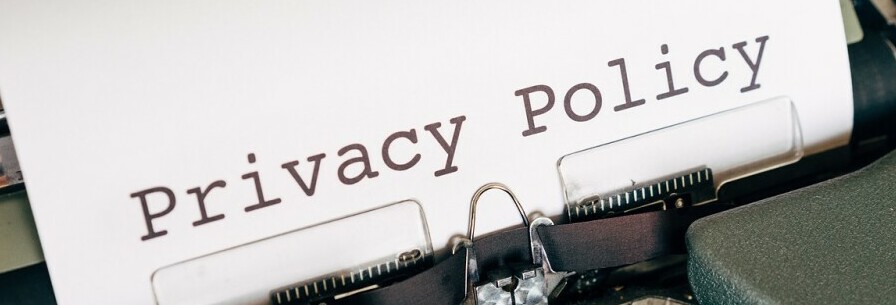Ensure the Integrity and Longevity of Your Website
In an era where digital presence is pivotal, maintaining a secure and well-functioning website is not just a luxury but a necessity. This comprehensive guide covers essential aspects of website security and maintenance, providing actionable insights to safeguard your digital space and ensure continuous operation.
Website Security Essentials to Safeguard Your Personal Digital Space
- Understand the Necessity of Robust Website Security
Website security is foundational in protecting not only the digital assets of the website owner but also the data of its users. Robust security measures are crucial in preventing unauthorized access, data breaches, and cyberattacks that can compromise sensitive information.
- Personal Ramifications of Website Breaches
A security breach can have severe consequences, including financial loss, reputational damage, and legal liabilities. Personal data, once compromised, can lead to identity theft and other malicious activities, underscoring the importance of stringent security protocols.
- Contribute to Overall Internet Health Through Individual Security
By securing individual websites, owners contribute to the broader ecosystem of internet security. Each secured site helps in creating a safer online environment, reducing the spread of malware and other cyber threats.

Navigate the Web’s Perils by Recognizing and Mitigating Cyber Threats
- Catalog of Prevalent Cyber Threats Targeting Websites
Websites face numerous threats, including but not limited to phishing, SQL injection, cross-site scripting (XSS), and distributed denial-of-service (DDoS) attacks. Recognizing these threats is the first step toward effective mitigation.
- Strategies for Fortifying Your Website’s Defenses
Employing strategies such as using strong passwords, implementing firewalls, encrypting data, and regularly updating software can significantly enhance your website’s defenses against cyber threats.
- Importance of Continuous Vigilance and Cybersecurity Updates
Cybersecurity is not a one-time task but a continuous process. Regular updates and vigilance are necessary to adapt to evolving threats and maintain a secure website environment.
Your Website’s Armor Strengthens Defenses Against Malware and Intrusions
- Effective Practices to Shield Your Website from Attacks
To shield your website, utilize security plugins, conduct regular security audits, and employ intrusion detection systems. These practices help in identifying and mitigating potential vulnerabilities before they are exploited.
- Tools and Tactics for Early Detection of Security Breaches
Early detection tools such as malware scanners, monitoring services, and anomaly detection systems can alert you to potential breaches, allowing for timely intervention.
- Incident Response
What to Do When Your Security Measures Are Tested? In the event of a security breach, having a response plan is crucial. This plan should include steps for isolating the breach, assessing the damage, restoring data from backups, and communicating with stakeholders about the incident and corrective actions taken.

The Pillars of Web Vitality For your Routine Website Maintenance
- Comprehensive Checklist for Consistent Website Upkeep
Routine maintenance ensures optimal performance and security. This includes updating software, checking for broken links, optimizing databases, and reviewing security logs.
- Performance Indicators to Monitor
Key performance indicators (KPIs) such as page load times, uptime, traffic patterns, and user engagement metrics provide insights into your website’s health and performance.
- Scheduling Regular Audits for Website Health
Regular audits help in identifying and rectifying potential issues before they escalate. Schedule audits to review security settings, performance metrics, and compliance with best practices.

Master Website Data Backup and Never Lose Your Work
- Importance of Consistent Website Backups
Data loss can occur due to various reasons, including cyberattacks, hardware failures, or human error. Regular backups ensure that you can quickly restore your website to its previous state with minimal data loss.
- Explore the Landscape of Backup Solutions and Frequency
Various backup solutions are available, including full backups, incremental backups, and differential backups. The frequency of backups should be determined based on the website’s update frequency and data criticality.
Step-by-Step Guide to Secure and Efficient Data Backup
- Choose a Backup Solution: Select a reliable backup service that meets your needs.
- Schedule Regular Backups: Automate backups to occur at regular intervals.
- Store Backups Securely: Ensure backups are stored in secure, off-site locations.
- Test Backup Restorations: Periodically test backups to ensure data integrity and restoration capabilities.
Fortifying Trust with SSL Certificates
- SSL/TLS Protocols and the Layer of Trust They Add
SSL/TLS protocols encrypt data transmitted between the website and its users, protecting it from interception and tampering. This encryption fosters trust by assuring users that their data is secure.
- Impact of SSL Certificates on User Perception and SEO
SSL certificates signal to users that a website is secure, enhancing their trust and willingness to interact. Additionally, search engines prioritize secure websites, improving SEO rankings.
- Tips for Choosing and Installing the Right SSL Certificate for Your Website
Select an SSL certificate that suits your website’s needs, whether it’s a single domain, wildcard, or multi-domain certificate. Follow the provider’s instructions for installation and ensure it is correctly configured.
Resolve Digital Interruptions And Deal with Website Downtime
- Common Causes Behind Website Outages
Website downtime can be caused by server issues, software errors, cyberattacks, or maintenance activities. Identifying the root cause is essential for effective resolution.
- Best Practices for Rapid Identification and Resolution of Downtime
Implement monitoring tools to alert you to downtime immediately. Have a response plan that includes steps for troubleshooting, restoring services, and communicating with users.
- Communication Strategies with Users During Website Disruptions
During downtime, keep users informed through alternative channels such as social media or email. Transparency about the issue and expected resolution time helps maintain user trust.

The Importance of Updating Website Components is Guarding the Gates
- The Critical Nature of Updates for Plugins and Web Software
Regular updates to plugins, themes, and core web software are vital for security and performance. Updates often include patches for known vulnerabilities and improvements in functionality.
- How to Manage Updates Efficiently Without Disrupting Website Operations
Schedule updates during low-traffic periods to minimize disruption. Use staging environments to test updates before applying them to the live site.
- Balance Functionality with Security in the Update Process
While updates are necessary for security, they should not compromise website functionality. Ensure compatibility and test thoroughly before implementing updates.
Elevate Security with Two-Factor Authentication
- Two-Factor Authentication as an Additional Security Layer
Two-factor authentication (2FA) adds an extra layer of security by requiring a second form of verification in addition to the password. This significantly reduces the risk of unauthorized access.
- Integration of 2FA on Personal Websites
Implement 2FA using services like Google Authenticator, Authy, or hardware tokens. Ensure the integration process is user-friendly and accessible.
- User Experience Considerations and Best Practices for 2FA Implementation
Provide clear instructions and support for users to set up 2FA. Balance security with convenience to ensure users do not find the process burdensome.

Craft a Compliant Website Privacy Policy For Transparency and Trust
- Define the Scope and Purpose of Privacy Policies
A privacy policy outlines how a website collects, uses, stores, and protects user data. It is a legal requirement and a trust-building tool.
- Key Elements to Include in a Personal Website’s Privacy Policy
Include information on data collection methods, usage purposes, data sharing practices, user rights, and security measures. Ensure the policy is clear and accessible.
- Legal Requirements and Ethical Considerations for Website Privacy
Compliance with regulations such as GDPR, CCPA, and others is essential. Ethical considerations include transparency, user consent, and respecting user privacy.
By following these guidelines, you can enhance the security and maintenance of your website, ensuring it remains robust, reliable, and trustworthy. Regular updates, vigilant monitoring, and proactive measures are key to safeguarding your digital space and maintaining a healthy web presence.
Want to learn more? Sign Up with me
Want to learn how I built ‘Barelon’ and started earning online? Join me as your coach at Wealthy Affiliate to discover affiliate marketing, web building, and more! And I’ll be happy to coach you through!

